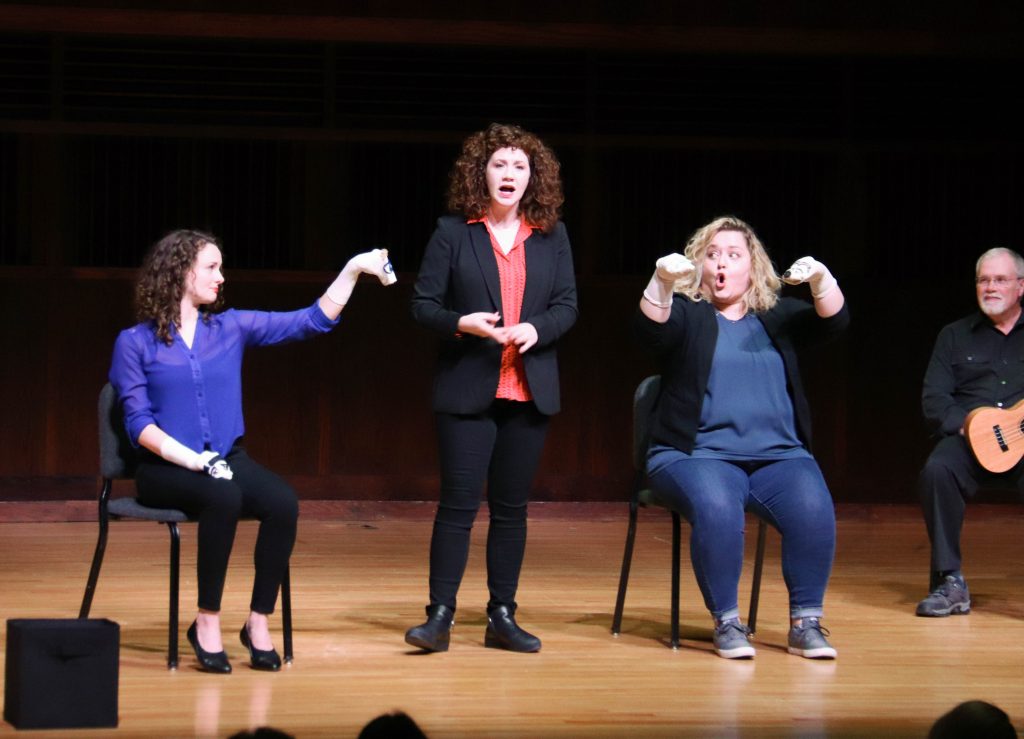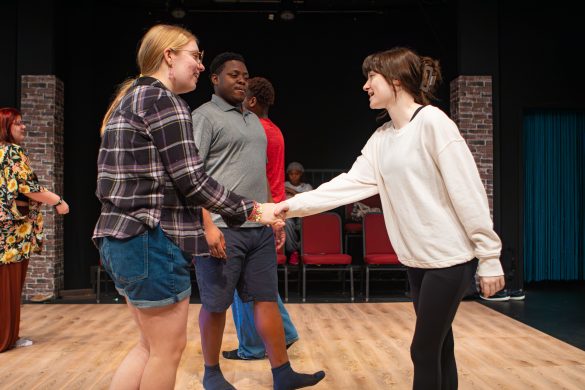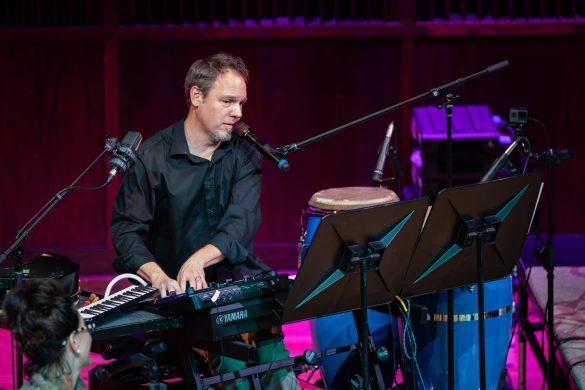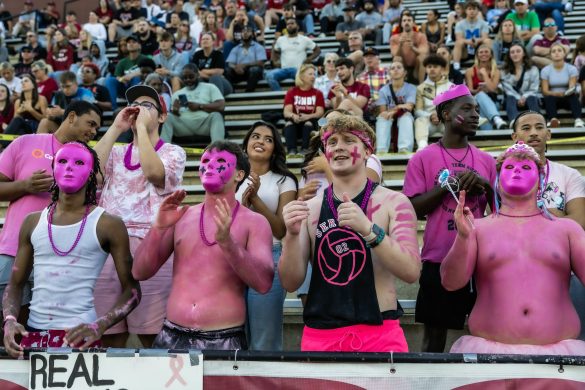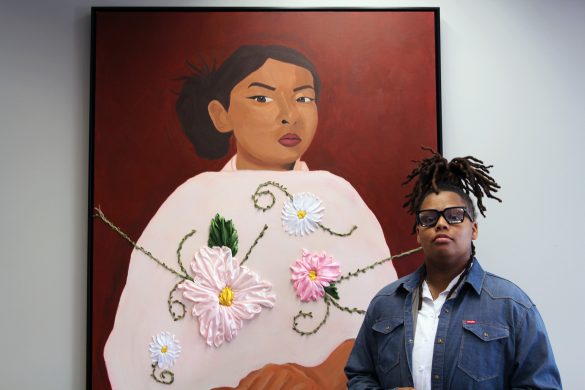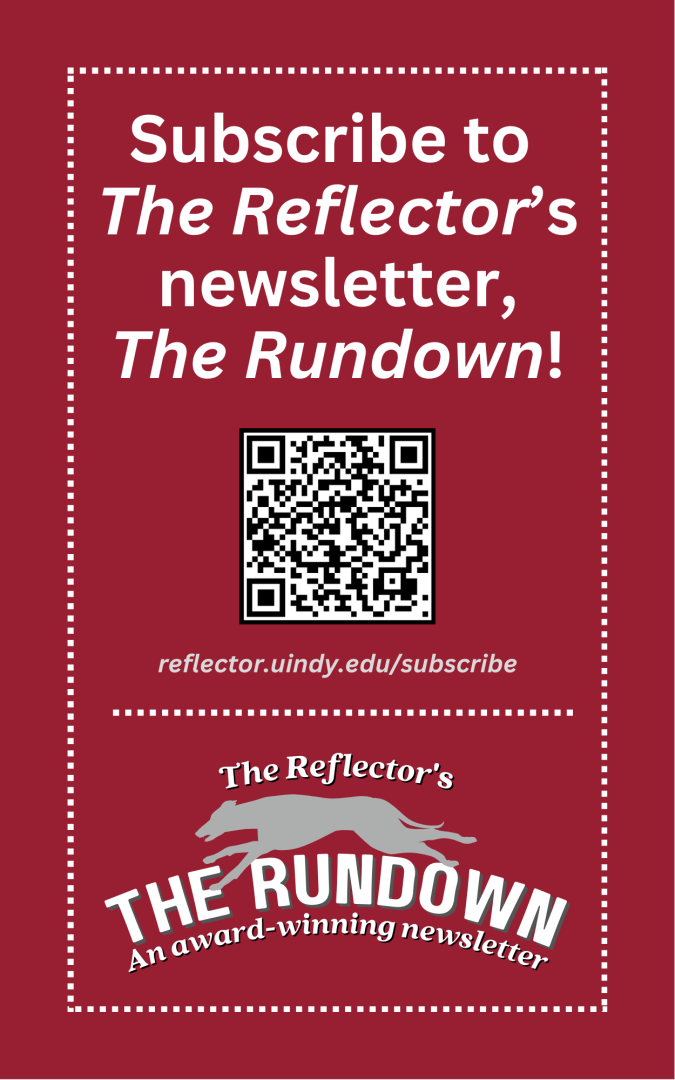Marie Curie. Rosalind Franklin. Maria Geoppert Mayer. Rita Levi-Montalcini. Lise Meiter. Françoise Barré-Sinoussi. Gertrude Belle Elion. Rosalyn Yalow.
These female scientists were featured in the play “No Belles: Legends of Women in Science,” which came to the University of Indianapolis on Feb. 6. The cast and crew came from Portal Theatre, which is associated with Western Oregon University.
From left to right: Kimberly Wilson, Jade Strong, Kira Batcheller and Michael Phillips use sock puppets to act out scenes from the life of Rosalind Franklin, a chemist who contributed to the discovery of the structure of DNA.
The hour-long show was filled with stories about overcoming obstacles. The actors depicted how the women worked for success as women in a predominantly male field and in the face of major adversity, according to Associate Microbiology Professor Doug Stemke.
“It’s not just about the science. It’s about overcoming and striving, and it really is about discovering, as well as the passion for doing what drives a person,” Stemke said. “They were remarkable individuals that really lived in a time when science wasn’t always a place that women were well respected.”
The show focused on the stories of women in science who played a hand in important scientific discoveries, such as the discovery connecting HIV to AIDS. Six of the eight scientists featured in the show were awarded Nobel Prizes in recognition of their contributions to science.
Actors Kira Batcheller, Jade Strong and Kimberley Wilson said that 51 women have won the Nobel Prize, and of those, only one woman has been awarded the prize in two separate fields. The show featured the stories of prize winning scientists such as Marie Curie.
“The purpose of the show was to give a voice to those who might not have a voice.”
Strong said that idea for the show was based on a book titled “Nobel Prize Winning Women.” Each performer chose which women’s stories resonated with them the most, and those were the women that they portrayed in the show, according to Strong.
Not only did the performance explain who the women were and how they influenced science, but also presented the audience with in-depth stories about their successes and failures
This was done by incorporating many different elements of storytelling into the show, including a scene acted out by sock puppets, a musical monologue, letters to and from some of the women and photos of the scientists throughout their lives that accompanied information being conveyed about each storyline.
The actors spoke often about the personal lives of each scientist throughout the performance. They explained to the audience how many of the women profiled in the play had families to manage and other responsibilities to consider—as well as discrimination against them on the basis of sex—along with their careers as scientists.
The stories that were told were meant to give the audience a deeper understanding of the scientists, as well as possibly providing a sense of female empowerment and progress, according to Associate Professor of Chemistry Ann Cutler.
“I thought the storytelling was exceptional, and the personal connection with dedicating, achieving and understanding under-recognized women was a real human connection for scientists of all genders and all backgrounds,” Cutler said. “It’s a human experience, but I think it’s also recognized as a female experience. I think it provided a connective experience for the audience.”
It was important to the creators of the show that the stories of these women were told, in order to make more people aware of the personal stories behind the careers of these scientists, according to Batcheller.
“I think the purpose behind the show is exposure, exposure to marginalized groups of people, specifically women,” Batcheller said. “The purpose of the show was to give a voice to those who might not have a voice, in terms of it being a theatre and science thing. We as artists, love speaking aloud and speaking in front of groups of people. However, scientists are more likely to stay in the lab and not speak to anybody. They don’t want to be up on that stage, but we do.”
